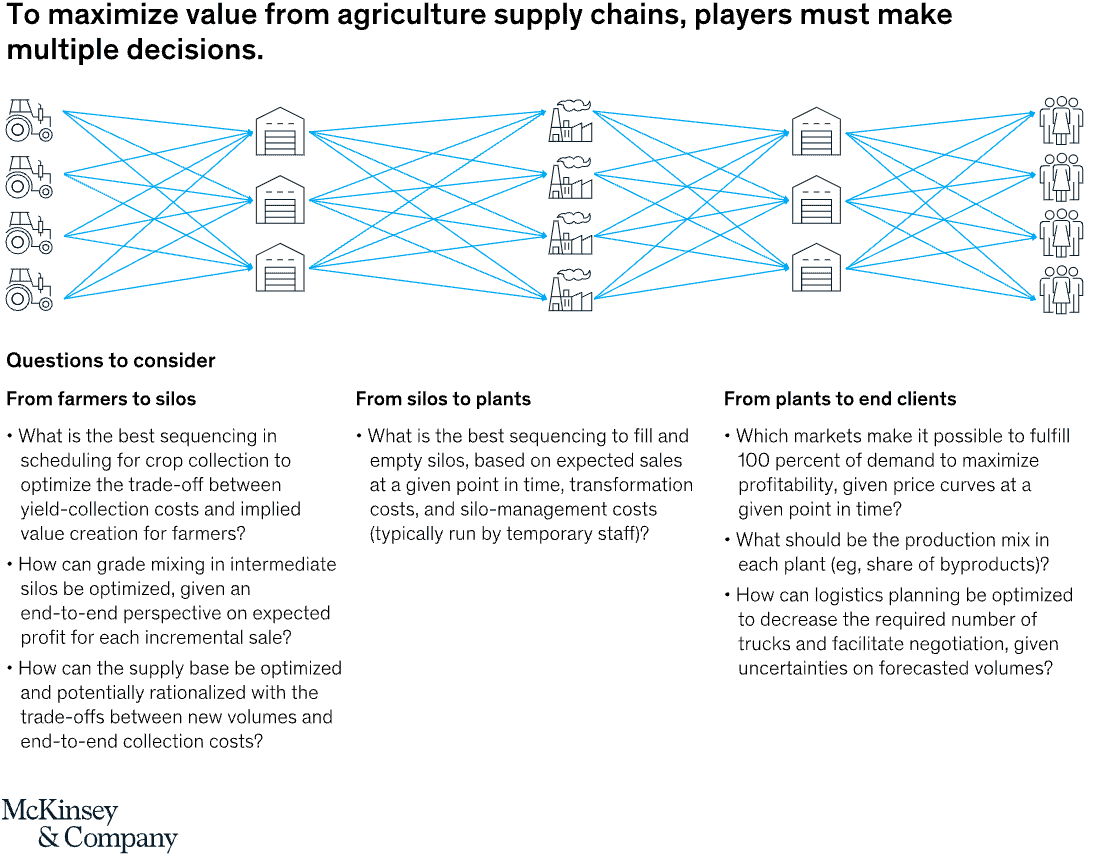According to McKinsey, ‘Food and agribusiness form a $5 trillion global industry that is only getting bigger. It accounts for 10% of global GDP and employs an estimated 1.5 billion people worldwide.
Technological innovation in food and agriculture
According to McKinsey, ‘Food and agribusiness form a $5 trillion global industry that is only getting bigger. It accounts for 10% of global GDP and employs an estimated 1.5 billion people worldwide. If current trends continue, by 2050, caloric demand will increase by 70 percent, and crop demand for human consumption and animal feed will increase by at least 100 percent.’
COVID-19 has taught this very well. The demand for food consumed has not gone down. Instead, consumers have a desire now to get closer to producers, so producers are also looking at ways to move closer to customers. This trend of shortening the supply chain started pre-COVID. But COVID-19 just accelerated this trend and there is a shift to buying more natural, fresh ingredients.
Complex and fragmented agriculture supply chain
Farmers know that 20% to 30% of losses occur during the period from harvesting to retail marketing. Losses occur mainly due to various environmental conditions in warehouse, and it changes the physical volume of product, quality, and nutrition value of products. Such losses automatically reduce economic value. Hence to avoid such losses technology plays a very important role in the preservation of food products.
According to McKinsey, ‘The agriculture supply chain is complicated by fragmented inbound and outbound networks. The typical agriculture supply chain involves three steps: from farmers to intermediate silos, from silos to transformation plants, and from transformation plants to clients. Each step requires multiple decisions.’

Solution purpose-built for the complex agriculture supply chain
Eka WMS and port management are end-to-end solutions built from the ground-up to manage the physical storage, and movement of commodities.
Eka WMS is a real time inventory, and transaction management system. The system is used for raising orders and monitoring stock, transactions, and quality across a network of commodity receival and storage sites. With Eka, site operators can define quality parameters for stock then raise orders for the movement of product, including billing information. This gives decision makers the ability to monitor inventory across an entire enterprise from the palm of their hand using a web interface and, if necessary, adjust and regrade the site stock levels. In addition, the integrated truck booking system can be used to shorten queue times for incoming trucks and interface with weighbridge control system can provide accurate weight capture.
Site Automation Control is a dynamic site management and control system that includes high level process planning, scheduling, task execution, and material tracking. With Eka Site Automation Control, increased throughput is achieved by optimizing equipment control; for example, machinery is turned off when it is not required, resulting in power savings. Site operators graphically see all assets and effectively plan receival, transfer, and loading tasks.
Eka Supply chain solutions are built on a single platform to manage logistics operations, orders, transactions inventory and accounts. The solution provides connectivity all the way from field devices to head office and trading teams; automation of records provides transparency, accuracy, and reduces fraud. Sampling equipment, weighbridges and belt scales are all captured, and data is attached to transactional records.
Other resources

Why opting for a unified supply chain...
Traditionally, there were ERP’s, a bunch of Planning, Procure to Pay, Logistics, Sourcing and Procurement, Contracting and Inventory systems, and many ingrown, allied processes…

Farmer connect
Commodity businesses lack the ability to connect in real time and antiquated paperwork and never-ending phone calls impact decision making.

Traditionally, there were ERP’s, a bunch of Planning, Procure to Pay, Logistics, Sourcing and Procurement, Contracting and Inventory systems, and many ingrown, allied processes…

Commodity businesses lack the ability to connect in real time and antiquated paperwork and never-ending phone calls impact decision making.